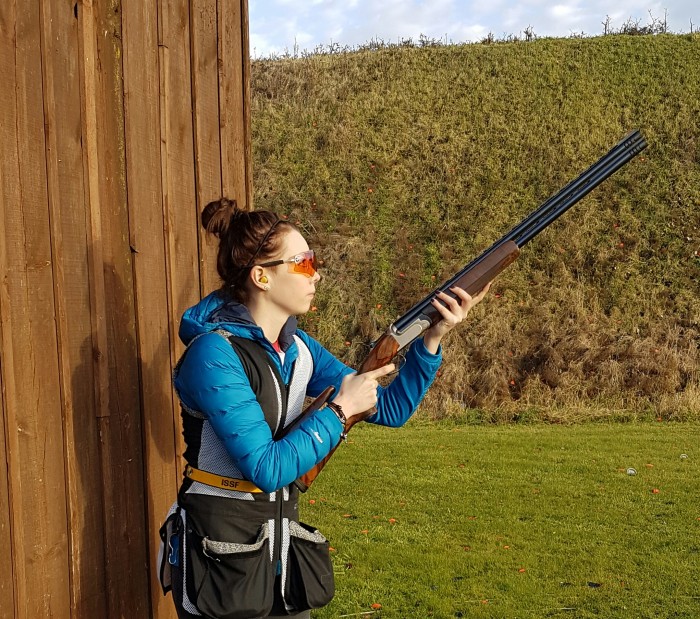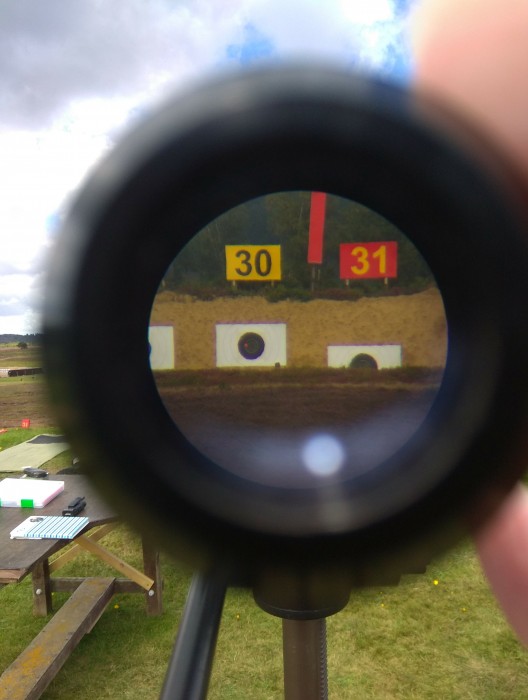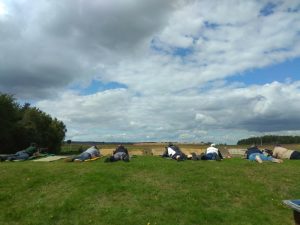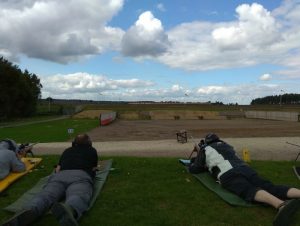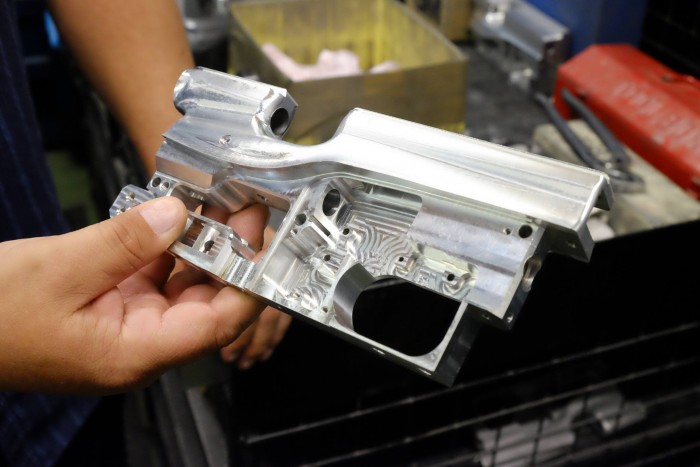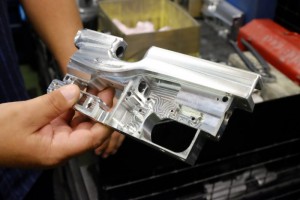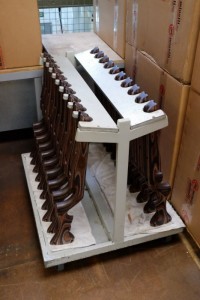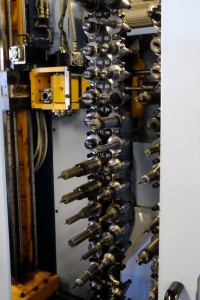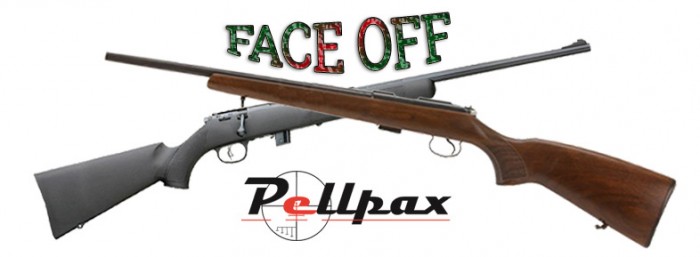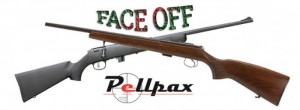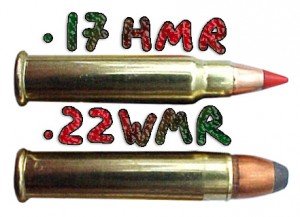Here at Pellpax we are constantly on the lookout for the best of the best when it comes to air rifles. To help you make the choice on what air rifle you want we have put together this list to answer the age old question : what is the best air rifle on the market?
First of all, the question we are asking is almost impossible to answer in its current form, so lets split it up into categories; jump to
Spring Powered Air Rifles
CO2 Air Rifles
PCP Air Rifles
Spring Powered Rifles
Technology has moved on greatly since these rifles were considered basic; there are now spring-powered rifles capable of shooting with all but the best PCPs.
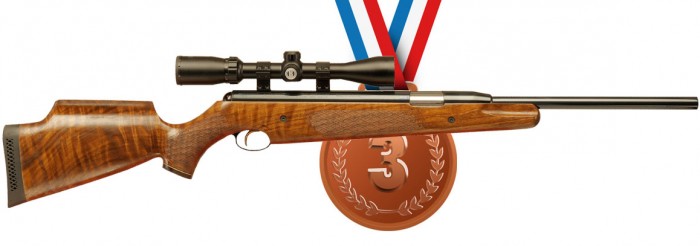 Great Springer Action: Air Arms Pro Sport
Great Springer Action: Air Arms Pro Sport
Pros :
The stock of the Pro-Sport is absolutely beautiful and one of its key selling points, and the walnut wood has been selected not only for its strength, but also its great finish and colouring. Trust me when I say, the pictures online do it no justice; you need to see it in person to really appreciate.
Another great feature of the Pro-Sport is the underlever. Now I’m not usually a fan of underlevers, because of the extra weight they add to the front of the rifle, which can make the rifle quite unbalanced. Air Arms have got around this by cleverly locating the underlever inside the stock to make this perfectly balanced between the hands.
The Pro-Sport also features a great trigger, which is crisp and precise and makes this rifle a joy to shoot. The barrel is also of exceptional quality, and the accuracy and precision of the rifle are truly excellent.
Cons :
Weighing in at nearly 4.5kg, the Air Arms is a very heavy air rifle, and when shooting in the hands and not on a rest, this weight is very noticeable. There are spring rifles available that are half the weight of the Pro-Sport, and when combined with the underlever that must continually be cranked, shooting the Pro-Sport can be quite a workout. Now, it’s not exactly running a marathon, but tired arms equate to inaccuracy – definitely something to consider when going on long shoots.
The Pro-Sport also comes without iron sights, so a scope is an essential extra purchase. Including a rest, and considering that the Pro-Sport is one of the most expensive spring rifles on the market, investing in one of these rifles is not something to be taken lightly. Also, the silencer on the Pro-Sport is fixed, and although it’s a nice one, it would be good to have the option to upgrade.
Read more about Air Arms rifles here
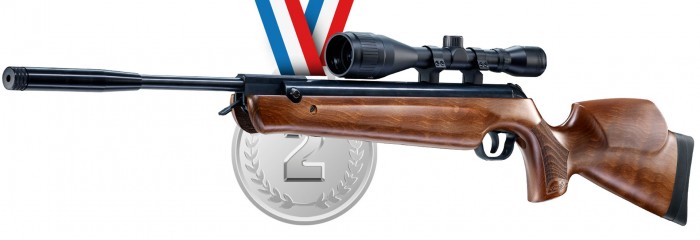 2nd Place Springer: Walther LVG Master Pro
2nd Place Springer: Walther LVG Master Pro
Pros :
The LGV features an ingenious super-silent vibration-reduction spring and piston system that dramatically reduces recoil whilst improving shot-to-shot consistency. This, along with the full 12ft/lb power that the rifle possesses, makes the LGV an absolute joy to shoot, fantastically accurate, and perfect for both pest control and target shooting. This system also makes the rifle far quieter than traditional spring rifles, an important feature when it’s used for pest control.
Walther rifles also feature German engineering, which is famously reliable. Of the many that we’ve sent out the door here at Pellpax, very few have come back to us, and I can’t think of one that wasn’t the fault of human error. The stock of the LGV Master Pro is cleverly shaped to be comfortable to shoulder for both left- and right-handed shooters.
The XM trigger of the Walther is also fully adjustable for both stage force and travel, and makes the LGV customisable to suit your preference. The trigger, when set up correctly, is crisp and precise with a predictable let off.
Cons :
The LGV Master Pro comes with a barrel weight in place of silencer, and while the spring system is quieter than most rifles, it would be nice to have a silencer included. The Walther also doesn’t have any iron sights, so you can’t get shooting straight out of the box.
Although the stock of the LGV is ambidextrously shaped, the finish of the Walther is not nearly as nice as the Pro-Sport. It’s not as glossy, and the chequering is not as precise as some others that we sell.
See more of our Walther range here
 Weihrauch HW98
Weihrauch HW98
Pros :
The HW98 has been designed with target shooting in mind and is consequently one of the most accurate spring rifles on the market today. Seriously, I put a few different kinds of pellet through this rifle – a few JSB Exact, as well as some Daystate Sovereign, as well as some cheaper H&Ns – and the HW98 was grouping incredibly well. Impressive stuff. I put this down to the Weihrauch’s bull barrel, which is superbly well made and is fully shrouded, eliminating the need for a silencer.
The way the stock of the HW98 is perfectly balanced between the hands and the adjustable cheekpiece and butt pad is a nice touch; it ensures shooters of all sizes can shoulder this rifle effectively. The textured panels of the HW98 provide a superb level of grip, even in wet conditions.
The Rekord trigger of the 98 is fantastically crisp and is perfect for all kinds of shooters. The trigger can be finely tuned to your personal requirement whilst providing a crisp let off for each shot. The HW98 is not only one of the finest spring rifles available, but has got to be one of the best shooting air rifles on the market today. Whether it’s target shooting or pest control, the HW98 has got to be the way to go.
Cons :
The look of the rifle, particularly the stock, is not going to be for everybody. Personally, I quite like it, but Weihrauch’s decision not to go for either a traditional or a tactical look, but to go somewhere in between, has left them with something that is certainly unique.
The rifle also comes without iron sights, although the top mounted rail makes adding scopes easy. The fully shrouded barrel also eliminates the need for an additional silencer, but it would be nice to have the option.
Read more about Weihrauch air guns range
Honourable mentions :
The Pellpax Rabbit Sniper Kit is perfect for those on a budget, as it comes with a break-barrel spring rifle, a Hawke scope and screw mounts, a barrel silencer, a padded gun bag, and two tins of ProShot Precision Pellets, all for under £200. The rifle is German made and great quality for the price.
Another rifle that is perfect for those looking to acquire a quality rifle at an affordable price is the Gamo Whisper Sting. The rifle comes complete with a Gamo Scope, and the rifle is fitted with a barrel silencer and fibreoptic iron sights.
CO2 Powered Rifles
CO2 rifles are refilled with 12g or 88g CO2 capsules, making them easy to use, and giving some CO2 rifles the ability to be semiautomatic. They will fire as fast as you can pull the trigger until the magazine is empty. CO2 rifles are often inexpensive and require little maintenance, but there are some seriously good quality guns out there if you know where to look.
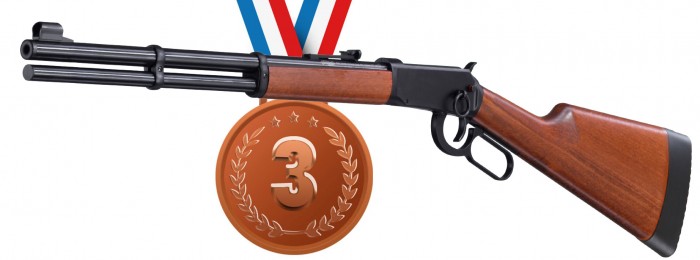 The Walther Winchester Lever Action
The Walther Winchester Lever Action
Pros :
The look of this rifle is perfect for fans of Spaghetti western movies or those who admire the Old West. The look of the Winchester is perfect, and the use of metal and wood perfectly encapsulates the feel of this historic time period. The finish on the stock is of the absolute highest quality and is hard wearing and durable, just like the originals would be.
I gave this over to a few friends of mine; they couldn’t believe it was an air gun, and were sure that I’d just handed them a fully loaded Winchester 30/30, due to its realistic look and weight. Impressive stuff.
The lever action of the Walther is reliable and effective and just great fun to use. It combines excellently with the rifle’s 8-shot magazine to make this rifle great for taking out cans or balloons in the back garden. The accuracy of the rifle is also impressive, but due to the reloading action, I wouldn’t recommend it for anything other than informal or practice target shooting. The Winchester also gets around 8 magazines’ worth of full power shots per refill, which equates to around 72 individual shots – pretty good for a rifle of this kind.
Cons :
Although in keeping with the time period, the Winchester is a little lax when it comes to options. There is no fitting for a silencer, or rail for a red dot sight or scope, which really limits the ability to use this gun effectively and prevents the Winchester from becoming a serious rifle instead of just a piece of fun.
There’s also quite a bit of plastic that has been used in the construction of this rifle; the sights, the barrel bands, and the butt plate are all plastic. This doesn’t detract from the overall look, as they are cleverly finished in matte black, but I would have preferred metal. Metal is just a more hard-wearing material, and the use of plastic is purely to save cost. Which would be fine, but the rifle already costs almost £350 – quite a lot for a CO2 rifle.
See more of our Walther range here
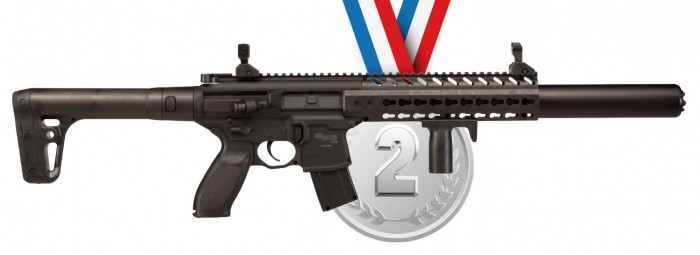
Pros :
The Sig Sauer is one of the finest-looking air rifles on the market, and if you’re looking for something in a military/police style, then there really is no better option than the MCX. The use of flip-up iron sights, as well as the tactical rails, make you feel like you’re holding a real firearm. The rails also mean this rifle can be customised with various accessories and tailored to suit your needs. The rifle comes complete with a silencer and front grip, making the rifle both relatively quiet and accurate. The accuracy is also enhanced by its rifled barrel.
The rifle also features a 30-round magazine, which is one of the largest of any CO2 rifle. One of the main selling points of the Sig is its semiautomatic action, which means this rifle will empty its magazine as fast as you can pull the trigger, making this rifle great fun. The MCX also uses an 88g CO2 capsule instead of 12g, greatly increasing the shot count.
Cons :
The MCX does feature a lack of precision in some of its details, such as the selector, mag release, and charging handle. All have quite a lot of play in them and lack the crispness expected of a rifle of this quality. The two-stage trigger is also a little wobbly, with a long uptake before the second stage, and again lacks that extra bit of finesse I expected.
The magazine itself is made from plastic and requires some work to be reloaded effectively. The pellets must be loaded into a belt, and then the belt is added to the magazine. This gives a lot of opportunity for error: if the pellets are not inserted perfectly correctly, the accuracy of the rifle is affected. Another small thing about the magazine is that the belt must only be moved in a clockwise direction, and if moved counter clockwise, will cause “serious damage to the magazine”. Now this is a simple instruction to follow, but get it wrong and your magazine is broken – something to bear in mind.
See more of our Sig Sauer range here
 Going For Gold: The Crosman Ratcatcher XL
Going For Gold: The Crosman Ratcatcher XL
Pros :
One of Crosman’s longest-serving CO2 rifles, the 2250 XL is really the only sensible choice when it comes to picking a CO2-powered pest control rifle. The accuracy of the 2250 XL is greatly improved with its extended 18” barrel, which is fully rifled and will have you taking out rats at around 40 metres.
Despite taking just a single CO2 capsule, the Crosman will provide around 30 full-power shots per refill, and the lightweight skeleton stock makes this rifle superbly manoeuvrable in the hands, with the whole rifle weighing just 1.6kg. The updated version of this rifle also features an improved bolt design and makes this rifle extremely smooth to reload.
The Ratcatcher also comes complete with a 4×32 Centre Point scope, although the top rail makes changing your choice of optics a doddle. The barrel is also fitted with a silencer that greatly reduces muzzle noise, an important and often overlooked attribute in a rifle designed for pest control.
Cons :
The look of this rifle is not going to be for everybody. The skeleton stock, while perfect for saving weight, doesn’t exactly make this rifle a display piece. It’s definitely a case of function over looks with this rifle.
The 2250 XL also is only available in single shot, meaning it must be reloaded after every trigger pull. This means that if you miss your shot, it’s going to take slightly longer before you can get your next shot off. Thanks to the accuracy of this rifle, however, one shot is likely all you need.
Read about Crosman here.
Honourable mentions :
The Super Stealth Rat Controller Pro Kit is only available in .22, but comes with a scope, mounts, silencer, bipod, capsules, and pellets – all for just over £200. This makes this kit ideal for those looking to deal with a pest problem quickly and effectively on a budget.
Another great CO2 rifle is the letcher M1891 Sawn Off, a relatively cheap and reliable rifle with an impressive finish. The only downside of the rifle is that it’s only available in 4.5mm BB instead of pellet, limiting its accuracy and effectiveness.
PCP Air Rifles
PCP rifles utilise a refillable air cylinder to propel their pellets with precision accuracy. PCP rifles are often the most effective and most sought-after air rifles on the market, and consequently there are several options available with prices ranging from £300 to £3000, so there’s a rifle out there to meet everybody’s needs.
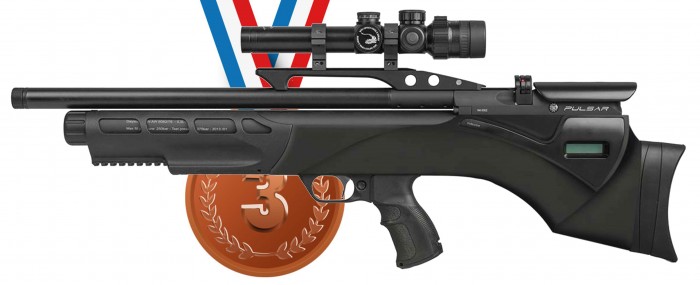 A Great PCP: The Daystate Pulsar Synthetic
A Great PCP: The Daystate Pulsar Synthetic
Pros :
Daystate are known for their attention to detail, and even by their high standards, the Pulsar truly is of the very highest quality. The fit and finish of the Pulsar is fantastic and a step above almost any other rifles; it seems almost a shame to shoot it.
The air cylinder provides around 250 shots in .177, and 300 in .22, which is truly a staggering amount per refill. That’s over half a tin of pellets before needing a recharge, and with the Pulsars internal electrics, the power stays the same no matter the amount of air left. The pulsar features an onboard computer, which feeds data to an LCD screen and tells the Pulsar how hard the solenoid needs to hit the valve to let out the exact amount of air each time, leading to unrivalled shot-to-shot consistency. This could be argued to be a case of over engineering, but there is some seriously clever stuff going on inside the Pulsar, and the results are outstanding.
Cons :
Being a bullpup, the Pulsar is not going to win any beauty contests, but also because your head is resting right above the action, the scope has to be mounted angled slightly downwards to be zeroed effectively at range; this makes knowing your distance and trajectories important if you want to shoot the Pulsar effectively. This is not just a pick-up-and-shoot rifle.
The Pulsar is also pretty heavy, weighing in at almost 4kg, and being a bullpup, the weight is concentrated towards the back of the rifle. Initially, this can make the rifle quite awkward when shooting standing up, but it’s something that can easily be compensated for. Chances are, you’re going to be shooting this from a rest or sandbag anyway.
Another thing that is large about the Pulsar is the asking price. I’m just going to come out and say it: the pulsar costs close to the £1600 mark, without any accessories, which, let’s be honest, is no small investment. You do get a lot of gun for the money, but £1600 is still enough for a decent car or a week away in southern France. I’d still rather the gun than both of these, but there are other rifles out there that cost a fraction of the price.
You can read up on Daystate here
 The BSA R-10 SE
The BSA R-10 SE
Pros :
The stock of the R-10 is made by Minelli, an Italian company that make stocks for prestigious brands, including Daystate, and the walnut wood used in the R-10 is a thing of beauty. Its ergonomic shape includes a raised cheekpiece for comfortable shouldering, and the butt pad is excellently shaped and textured for superb grip.
The BSA features a Customer Configurable Shroud (CCS) system which allows the R-10 to be changed from either bull barrel or a standard barrel with a full-length silencer attached. The difference between these two options is negligible, but it’s always nice to have the option. The regulator has also been greatly improved since the last version of the R-10, and now provides 11% more shots per refill for a greatly increased shot count of around 165 in .177 and 225 in .22.
The barrel and trigger system of the R-10 is expertly manufactured and provides precision and accuracy, making this rifle ideally suited to competition and serious target shooting, as well as pest control.
Cons :
The stock of the R-10, although well shaped, is extremely high gloss, which reflects the light a little too well, and if you’re out hunting, the resulting glare can not only be distracting while shooting, but can also alert animals to your position; so a matte, or at least semi-matte, finish might be a better option.
The cocking mechanism must also be carefully operated, as the magazine can be cycled without cocking the trigger. This means that the rifle can quite easily be double loaded, with one pellet behind the other in the barrel. Firing the gun in this scenario can cause serious damage to the inside of the barrel, although a careful cocking regime can eliminate this issue.
The rifle can also be fired without fully closing the catch, which will result in poor accuracy when firing. In fact, when testing, I fell into this trap. I put it down to youthful exuberance, and was confused by the rifle’s poor accuracy. Rest assured that when the catch is fully closed, the rifle is extremely precise, but this mistake is easily made.
Check out our BSA range here
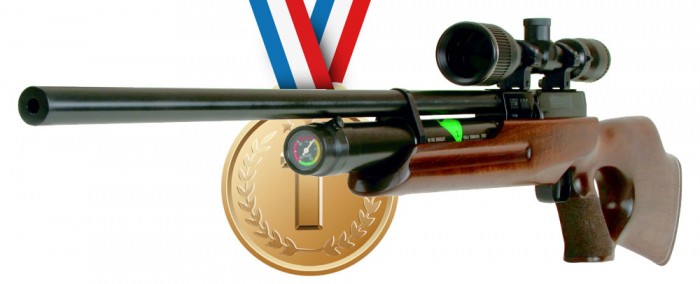 PCP Gold Goes To: the Weihrauch HW100 T
PCP Gold Goes To: the Weihrauch HW100 T
Pros :
For the money, there is simply no better rifle. The rifle comes complete with two 14-shot magazines, a removable quick-fill air cylinder with a pressure gauge, and Weihrauch’s own half-inch UNF silencer – everything you need to start shooting.
The HW100 is available for under £800 and can compete with rifles that are more than twice the price. This thing needs to be shot to be believed.
As well as its incredible accuracy, the HW100 T features a fantastically manufactured stock, which is ergonomically shaped with a generous thumbhole shape that fits the hands beautifully and provides a secure and sure grip, even in wet conditions – perfect for outdoor hunting.
The gun is superbly easy to use and to load, and also cycles and cocks with reliable precision. In fact, the magazine of the HW100 is one of the key selling points and can be easily unclipped. Thanks to the magazine being open, you can also easily see how many pellets you have left, so you can be confident you are shooting more than just air when sighting up your next rat.
Cons :
The air cylinder of the HW100 is quite heavy, particularly when filled with air, and can make the rifle unbalanced when shooting. The thumbhole stock does a good job of counteracting this, but this uneven balance, along with the rifle’s high weight, can make for a tiring shoot when you’re out all day.
Honourable mentions:
The Kalibrgun Cricket, another bull-pup rifle from a less well-known brand, is incredibly accurate and comes with four 14-shot magazines. This rifle is not the best-looking rifle ever made, but is an impressive shooter for the price.
The Hatsan AT44X is great for those looking to buy a PCP rifle of high quality whilst on a budget, and is available for under £400. The inbuilt cylinder features a pressure gauge, and the rifle also has an auto safety – features not often included with rifles of this price.
Read more about Weihrauch air guns range
To Conclude
So there you have it: the definitive list of the best airguns on the market.
Everyone has their own preferences, but keep this list as a guide and you won’t go far wrong. When it comes to the best pistol, that’s another conversation entirely, and one that won’t be answered here. Frankly, I’m sure you feel like you’ve read enough.
Stay tuned to the Pellpax Blog for more articles coming soon and keep checking back for our latest offers.


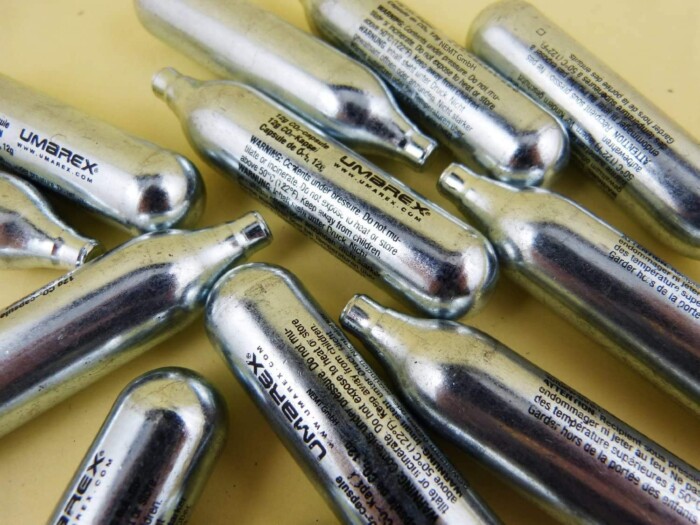
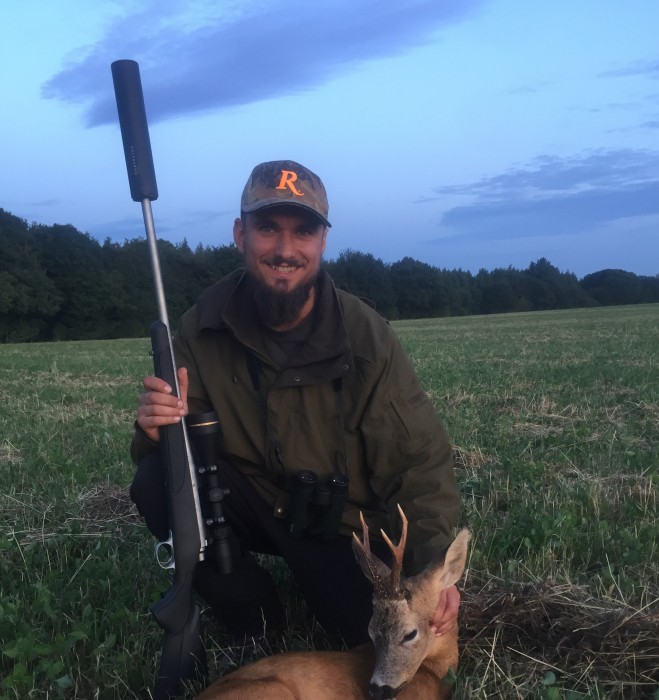

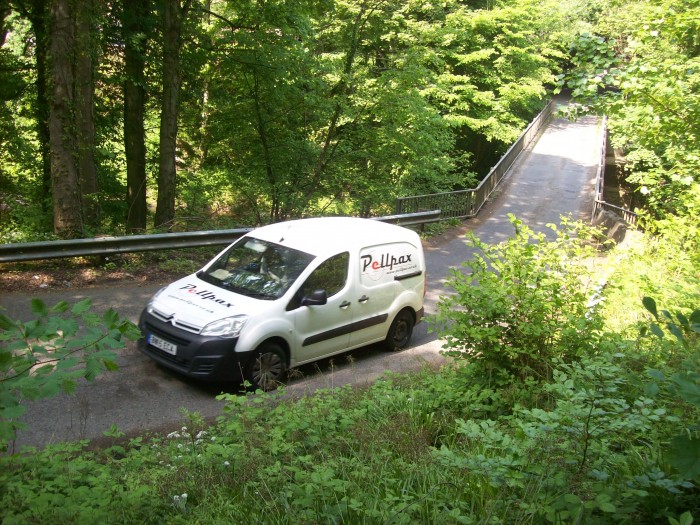

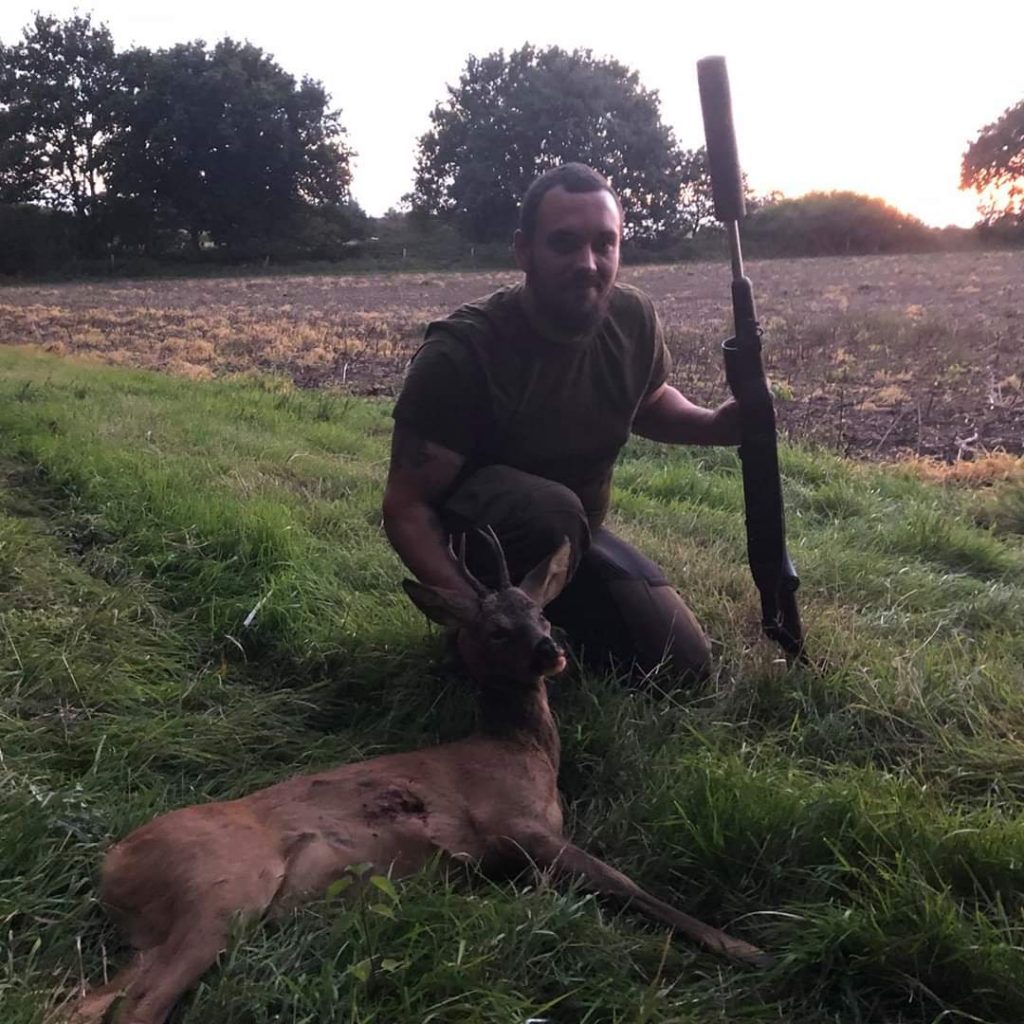
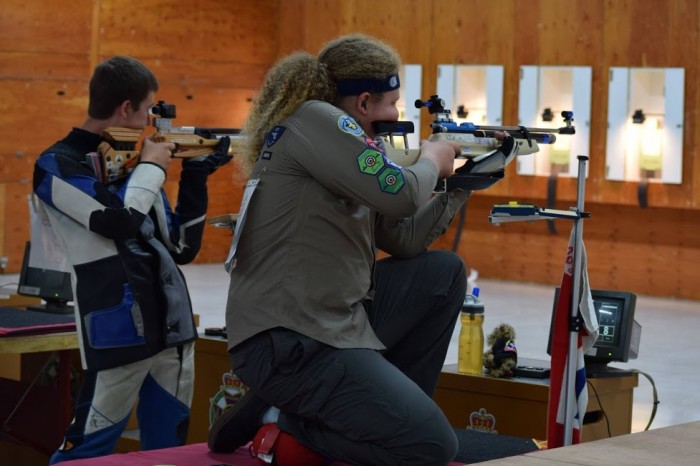
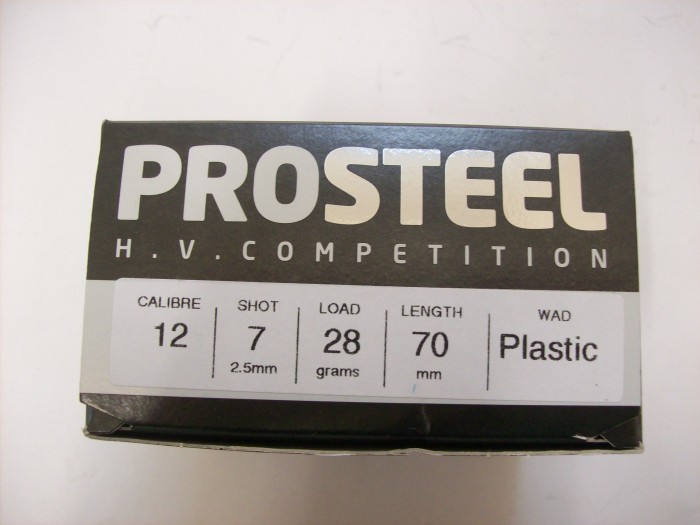









 Great Springer Action: Air Arms Pro Sport
Great Springer Action: Air Arms Pro Sport  2nd Place Springer: Walther LVG Master Pro
2nd Place Springer: Walther LVG Master Pro The Walther Winchester Lever Action
The Walther Winchester Lever Action
 Going For Gold: The Crosman Ratcatcher XL
Going For Gold: The Crosman Ratcatcher XL A Great PCP: The Daystate Pulsar Synthetic
A Great PCP: The Daystate Pulsar Synthetic The BSA R-10 SE
The BSA R-10 SE  PCP Gold Goes To: the Weihrauch HW100 T
PCP Gold Goes To: the Weihrauch HW100 T
 This talented young shooter, who took up the sport less than two years ago, has already reached a high competitive standard, and is training hard for her climb to the very pinnacle of success: the Olympic Games. Combined with unwavering support from her mum, Lisa, the financial assistance from Pellpax will provide Olivia with the means to train hard and to attend competitions.
This talented young shooter, who took up the sport less than two years ago, has already reached a high competitive standard, and is training hard for her climb to the very pinnacle of success: the Olympic Games. Combined with unwavering support from her mum, Lisa, the financial assistance from Pellpax will provide Olivia with the means to train hard and to attend competitions.

